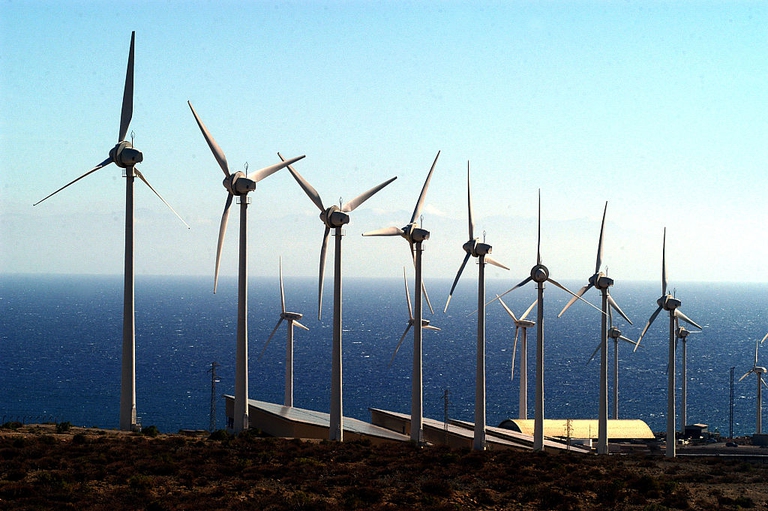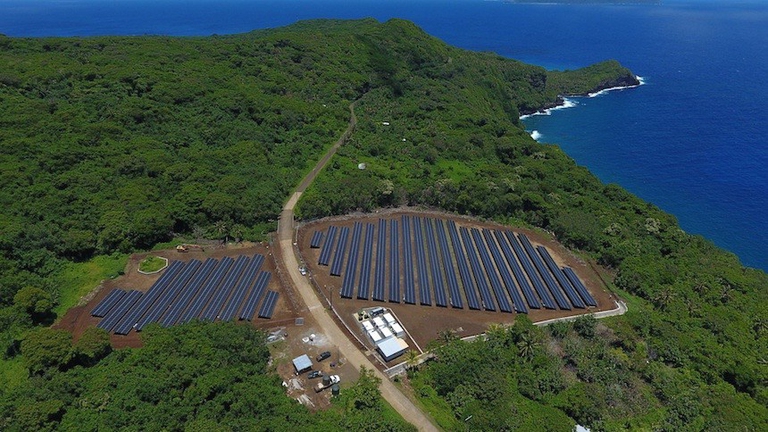
A group of experts in Tokyo suggested pouring radioactive water from Fukushima into the open sea. A marine biochemist explains the consequences of this absurd decision.
Emanuele Taibi, analyst at renewable energy agency Irena, explains why islands are well placed to push forward toward a more sustainable development model based on renewables and technological innovation
Emanuele Taibi, Islands Energy Transition Analyst at IRENA, gives us an update on the adoption of renewable energy on islands worldwide, from policy frameworks to technologies. IRENA, the International Renewable Energy Agency, with headquarters in Abu Dhabi and offices in Bonn and New York, is an intergovernmental organisation that supports countries in their transition to a sustainable energy future. Emanuele Taibi is also member of the jury of the Greening the Islands Awards, promoted by the Greening the Islands international conference.
You have a great viewpoint on what’s happening in terms of the development of renewables on islands at a global level. What’s the current situation?
Renewable energy is a policy priority in islands worldwide, as illustrated by the results of the Quickscan developed by IRENA for 20 small island developing states (SIDS). Key drivers include: reduction in the cost and price volatility of energy supply, reduction of local impacts from fossil fuels, as well as leading by example in climate change mitigation efforts, whereby islands are the most affected by climate change, although the least responsible for it.
What are the prospects for different renewable technologies?
The steep reduction in solar and wind cost over the last decade led to grid parity in most jurisdictions. However, islands have been the first ones where renewables reached grid parity. Irrespective of current oil prices, solar and wind remain strongly competitive in islands, and the focus is now shifting on how to best integrate large shares of solar and wind in isolated power systems in the most efficient manner, rather than discussing whether or not this is a worthwhile proposition. The economic and environmental cases are now closed, and it is time to focus on accelerating deployment.
That’s encouraging to hear. So what factors come into play for renewable deployment in island locations compared with elsewhere?
Key challenges for deployment of renewables in islands are linked to their geographical characteristics of small size and isolation: while these factors make their energy supply from fossil fuels expensive and increase the competitiveness of renewables, the small scale of projects makes them less attractive for investors. On the other hand, a strong case for showcasing state-of-the-art technologies allows for large manufacturers and project developers to dedicate significant efforts to islands. Just to give an example, the latest project from Solar City and Tesla in American Samoa has received great media attention, despite being relatively small in size compared to other solar PV installations on the mainland. This is because it allows to test a transformation from a system fuelled by 100 per cent diesel to 100 per cent solar PV in a single project and demonstrate that such a system is not only economically viable, but also technically feasible with off-the-shelf technology.
From a policy point of view, what examples should islands be looking at to accelerate the uptake of renewables?
I would distinguish islands in two categories when it comes to policy aspects. Island states, and specifically small island developing states, have a key role in leading the way in terms of political leadership. IRENA has been working with many partners through the SIDS Lighthouses Initiative to support the transition of SIDS to a future powered by renewable energy. However, the institutional framework tends to suffer from limited capacity and resources for the development and implementation of policy and regulatory frameworks that are conducive to an accelerated deployment of renewable energy. On the other hand, islands that are part of large countries can inherit and benefit from solid institutional frameworks and financial resources to support rapid deployment of renewable energy projects, as has been shown in many instances, including in Hawaii (US), Canary Islands (Spain), French Polynesia, Martinique, Guadeloupe (France) and Tokelau (New Zealand).
What best practices come to mind of projects implementing renewable solutions on islands?
Many best practices exist around the world, and some are collected in a series of IRENA publications that just reached its third edition, A path to prosperity: Renewable Energy for Islands.
Best practices all include a combination of strong political will together with an updated policy and regulatory framework that reflects the paradigmatic change that renewables bring. An improved framework includes specific attention to creating a stable and low-risk investment environment for renewables. This is a significant change in approach from the past, where investments for energy infrastructure were limited, while operational costs – namely imported petroleum products – dominated the cost of energy supply in islands. This had a significant impact on the economy of islands, where in most cases a two-digit share of GDP was spent on importing fossil fuels, exposing and linking national economic growth to the volatility of oil prices. Renewable energy gives the opportunity of stabilising and reducing the cost of energy supply through investments in infrastructure. This is a significant change in the required business model, moving away from passing on the cost of imported fossil fuels to customers, towards a model where the policy framework for investment is key for a successful transition to a system based on renewable energy.
Siamo anche su WhatsApp. Segui il canale ufficiale LifeGate per restare aggiornata, aggiornato sulle ultime notizie e sulle nostre attività.
![]()
Quest'opera è distribuita con Licenza Creative Commons Attribuzione - Non commerciale - Non opere derivate 4.0 Internazionale.
A group of experts in Tokyo suggested pouring radioactive water from Fukushima into the open sea. A marine biochemist explains the consequences of this absurd decision.
A federal court in Washington, D.C. has struck down the Dakota Access Pipeline, following years of campaigning by the Standing Rock Sioux tribe.
A poco meno di un mese dalla Cop21, le isole si candidano a diventare laboratorio per le rinnovabili, in prima linea per contrastare i cambiamenti climatici.
The Scottish island of Eigg is self-sufficient for its energy needs, relying almost entirely on renewable sources, especially thanks to a coordinated community effort.
President Magufuli in unmovable in going ahead with the Stiegler’s Gorge dam despite conservationists’ warnings of the damage it will cause the Selous Game Reserve’s ecosystem and wildlife.
A large dam along the Luangwa River in Zambia would have posed a serious risk to local people and wildlife, leading hundreds of thousands to oppose it. A call to which the government responded by halting plans to build it.
The first one megawatt solar power plant in the Chernobyl exclusion zone has become operational. This is the first step in a renewable energy development project promoted by the Ukrainian government in the area.
A tanker exploded at a gas and petrol station in Nigeria’s Nasarawa state on the 10th of September, killing 35 people and leaving some burned beyond recognition; 3 citizens had several spine and brain injuries, 2 of them are still on Intesive Care Units. Fela Habila , a local singer, is now stable and out of danger but
The largest tidal power plant in the world will be built in the Larantuka Straits. It will serve 100,000 people and help overcome some of the challenges of energy provision in Indonesia.










